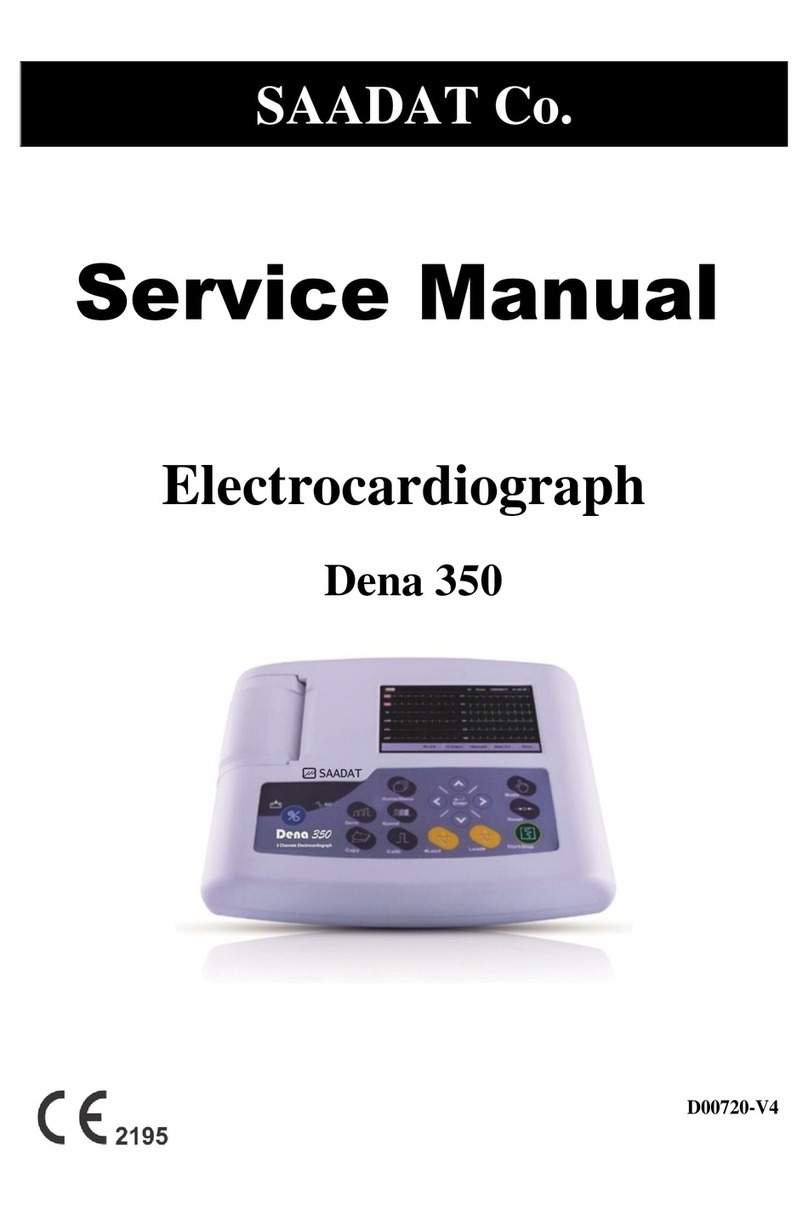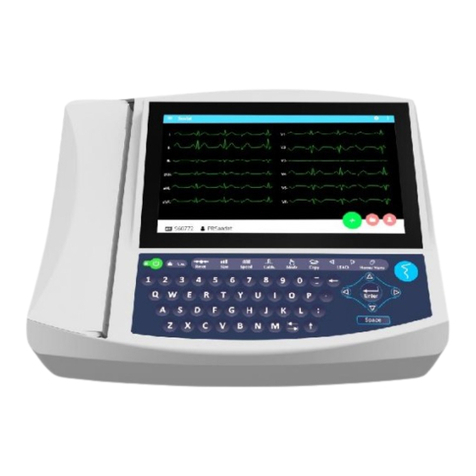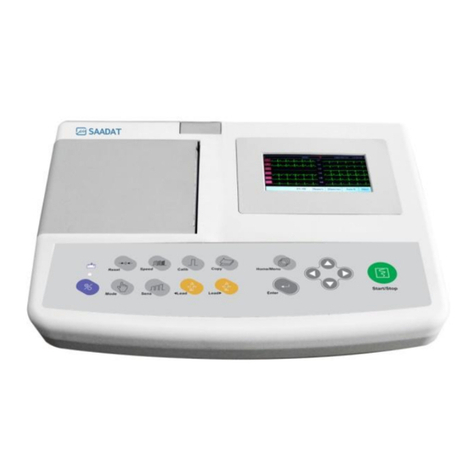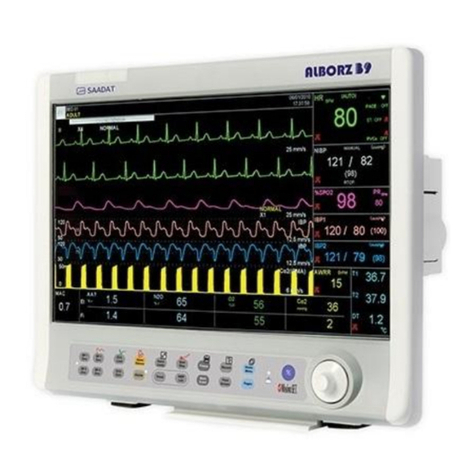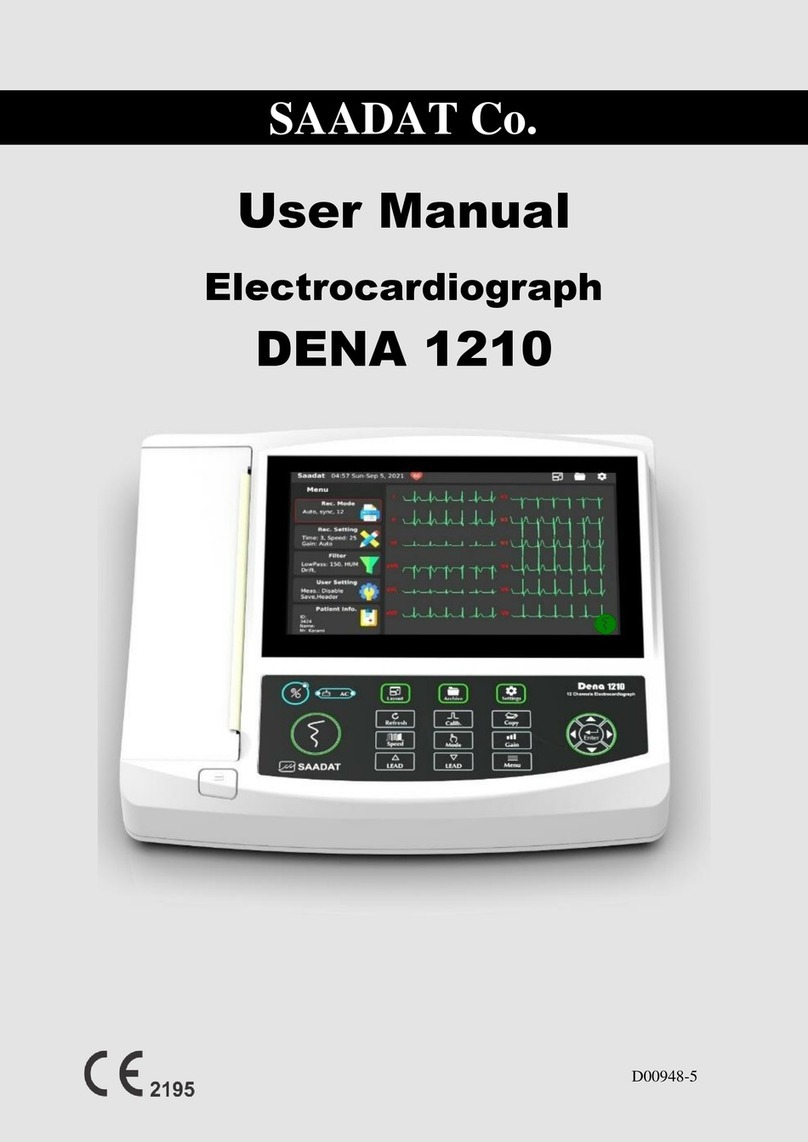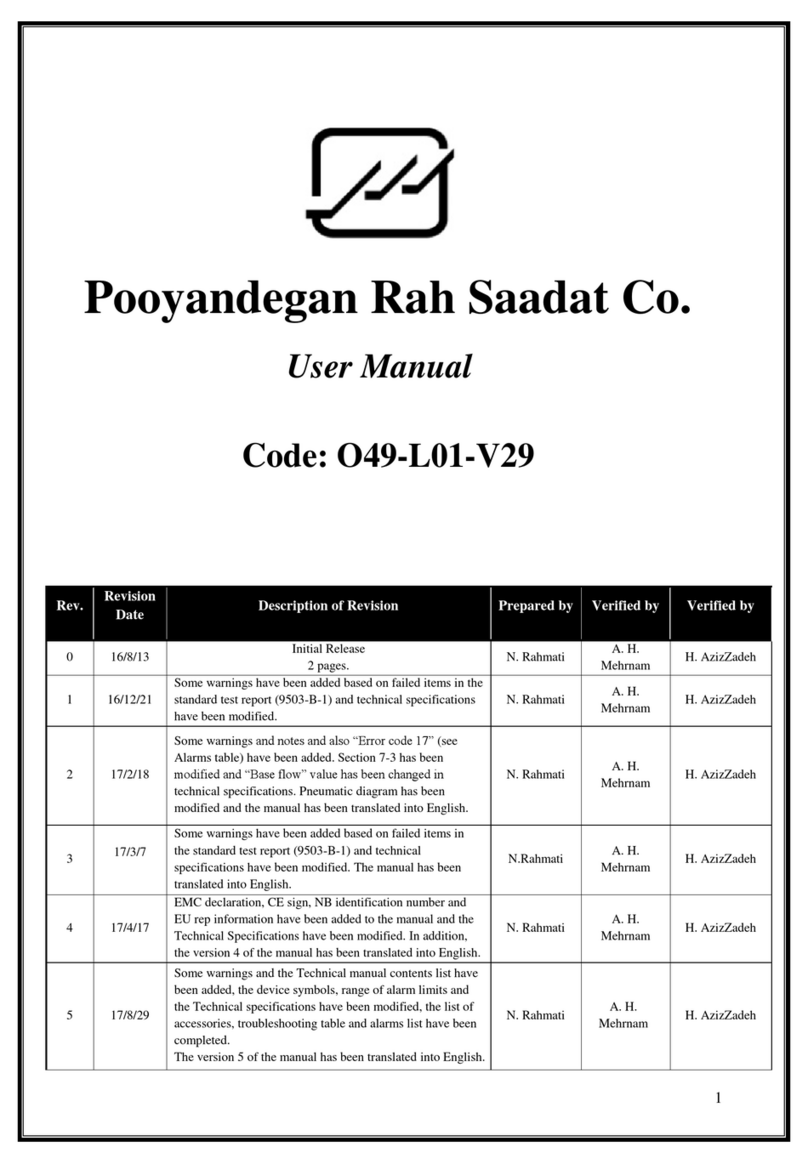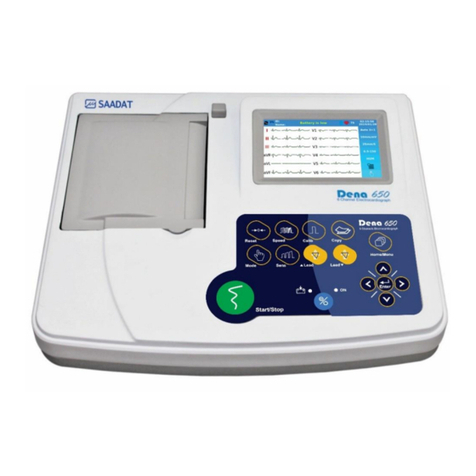4
Contents
1INTRODUCTION................................................................................................................................................5
1-1 DESCRIPTION..........................................................................................................................................................5
1-2 INTENDED USE ........................................................................................................................................................5
1-3 WARNINGS AND SAFETY INFORMATION........................................................................................................................ 6
1-4 DEVICE LABELS AND SYMBOLS....................................................................................................................................7
1-5 GUARANTEE AND RESPONSIBILITIES .............................................................................................................................8
2OVERVIEW OF SHOOKA AED ............................................................................................................................9
2-1 DEFIBRILLATION ......................................................................................................................................................9
2-2 DEVICE VIEWS.........................................................................................................................................................9
3ACCESSORIES .................................................................................................................................................12
3-1 BATTERY..............................................................................................................................................................12
3-2 PADS ..................................................................................................................................................................14
4OPERATION....................................................................................................................................................16
4-1 USE OF THE AED................................................................................................................................................... 16
5AED MANAGEMENT MODE............................................................................................................................20
5-1 PREPARING SHOOKA FOR MANAGEMENT MODE.......................................................................................................20
5-2 SETTINGS.............................................................................................................................................................20
6MAINTENANCE AND TROUBLESHOOTING......................................................................................................22
6-1 PHYSICAL AND ACCESSORIES....................................................................................................................................22
6-2 SELF-TEST...........................................................................................................................................................22
6-3 TROUBLESHOOTING ...............................................................................................................................................23
6-4 PERIODIC INSPECTION.............................................................................................................................................24
7CLEANING AND DISINFECTING .......................................................................................................................25
8TECHNICAL SPECIFICATIONS...........................................................................................................................26
APPENDIX 1_ RECTILINEAR BIPHASIC WAVEFORM.................................................................................................28
APPENDIX 2_ ECG ANALYSIS ALGORITHM ACCURACY ............................................................................................31
APPENDIX 3_EMC...................................................................................................................................................35






